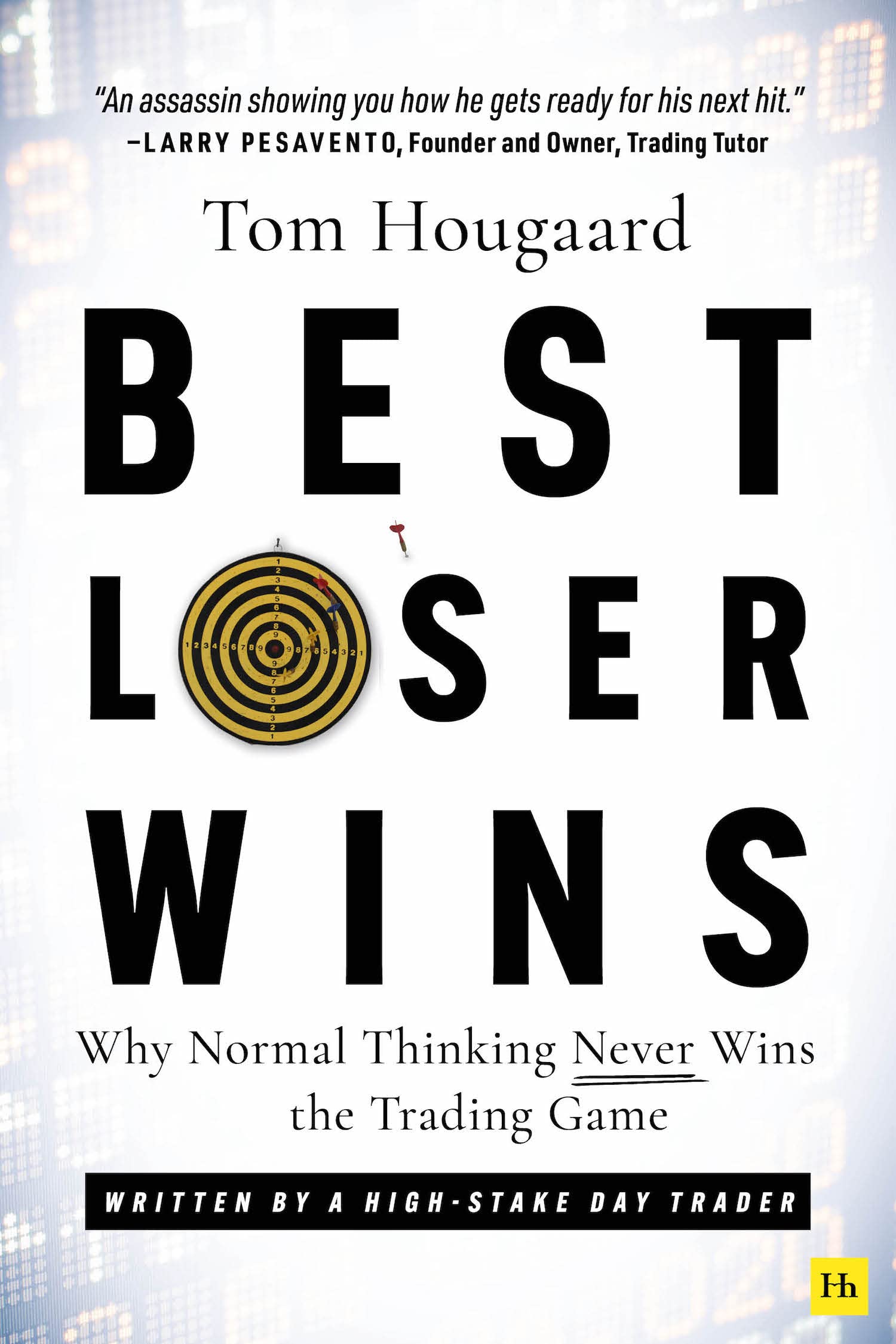Trading is a game of numbers, strategy, and emotional control. While technical skills and market knowledge are crucial, it’s something often overlooked that truly makes a difference—patience. In a world where everything moves fast, developing patience as a trader isn’t just important; it’s essential. Patience is the silent hero behind every successful trade.
So many traders, especially beginners, are caught in the whirlwind of making quick decisions under pressure, driven by emotions like fear or greed. The result? Overtrading, poor risk management, and missed opportunities. Without the ability to control these impulses, traders often find themselves making decisions that ultimately hurt their long-term profitability.
The solution is mastering patience—this hidden edge that can turn a novice trader into a pro. By learning to wait for the right opportunities, respecting your strategy, and letting your trades play out, you set yourself up for long-term success. Here, we’ll explore why patience is not only beneficial but necessary for any trader serious about success.
Why Patience Matters in Trading
Patience isn’t just about waiting around; it’s about making decisions that align with your trading plan. The market doesn’t care if you’re in a hurry—it rewards those who wait for the right opportunities. Let’s explore why patience is such a game-changer in trading.
Patience and Emotional Control
Emotional control is at the core of patience in trading. When you’re calm, you make better decisions. Impulsive trades often stem from emotions—fear, greed, and excitement. As I’ve learned throughout my years of trading, stepping back and assessing the market when you’re not emotionally charged can be the difference between a winning and losing trade. By being patient, you filter out emotional noise and stick to the strategy that works.
Impact on Market Timing
Timing is everything in trading, and patience helps you wait for the perfect moment. Many new traders rush into trades just to be active, but successful traders understand the value of waiting for a high-probability setup. As you refine your patience, you’ll learn that sometimes, the best move is no move at all.
The Psychology of Patience in Trading
Understanding the psychological side of trading is crucial. Patience isn’t just about waiting for a setup—it’s about controlling your mind in the heat of the moment. As I’ve experienced, the mental battle is often harder than the technical one.
Emotional Control in High-Stress Situations
We all know the feeling when the market turns volatile. It’s easy to panic or second-guess your strategy. But patient traders are different—they use stressful moments to assess, not react. When I first started, I remember how the rush of a market movement would make me jump into trades without thinking. Over time, I’ve learned that patience during these times allows me to think clearly and make decisions based on data, not fear.
Overcoming the “Fear of Missing Out” (FOMO)
FOMO is a killer in the trading world. It’s tempting to jump in as soon as you see a big move. But successful traders know that missing out on one move doesn’t mean you’re missing out on success. Patience helps you avoid chasing the market and wait for setups that align with your strategy. The more I embraced patience, the less I was affected by FOMO, and my trading results improved dramatically.

Building Patience: Strategies for Traders
Now that we’ve discussed why patience is crucial, let’s dive into practical ways to build it. Patience isn’t something that happens overnight—it’s a habit you can cultivate with the right strategies. Here are a few ways I’ve worked on developing my own patience as a trader.
Setting Realistic Goals and Expectations
Patience starts with clear, achievable goals. I used to set unrealistic expectations for myself, hoping for immediate results. When those didn’t come, frustration would lead to impulsive trading. By setting smaller, realistic goals and acknowledging that trading is a long-term journey, I’ve learned to give myself time to grow and improve.
Developing a Trading Routine
A routine gives you structure and helps you remain patient. I’ve found that scheduling specific times for trading, research, and reflection keeps me focused and prevents emotional overtrading. When you know exactly what you’re doing and why, you’re less likely to make rash decisions. Developing a routine also ensures you stick to your strategy, regardless of market distractions.
The Role of Patience in Managing Risk
Risk management is key to surviving and thriving in the trading world. One of the best ways to manage risk is through patience. By waiting for setups that meet your criteria, you’re naturally filtering out the high-risk trades. Patience gives you the time to assess the risk and make smarter decisions.
Risk Management with Patience
Instead of chasing the market, patient traders focus on waiting for the right time to enter. Every trade carries risk, but being patient allows you to enter at the most favorable points, thereby reducing unnecessary exposure. Over the years, I’ve seen how being patient has helped me keep my losses small and my wins more consistent.
Patience vs. Impulsive Trading
There’s a fine line between being patient and being inactive. Impulsive trading often comes from the desire to act, but real success in trading comes from waiting for the right moment. I can recall moments where I would jump into trades because I felt I needed to be active. Those impulsive trades often led to losses. Now, I’ve learned that patience isn’t about doing nothing—it’s about doing the right thing at the right time.
How Patience Enhances Decision Making
One of the most significant ways patience impacts trading is by improving your decision-making. The ability to take a step back, breathe, and think clearly is the mark of a professional trader.
Avoiding Overtrading
Overtrading is a trap many traders fall into, myself included. It’s tempting to trade just because the market is moving, but this often leads to unnecessary losses. Through patience, I’ve learned that it’s better to wait for quality setups rather than forcing trades. Over time, this approach has helped me build more consistent profits.
Waiting for High-Probability Setups
Patience allows you to wait for setups that align with your strategy. I’ve learned that not every market move deserves my attention. High-probability trades that meet my specific criteria are worth waiting for. The more selective I’ve become with my trades, the more confident I feel about my decisions—and the better my outcomes have been.
Real-Life Examples of Patience in Action
Now, let’s explore some real-life examples of how patience can lead to better trading decisions. Seeing how patience plays out in practice can help you understand its impact more clearly.
Case Study: The Long-Term Trader’s Journey
One of the most inspiring case studies I’ve come across is the journey of a long-term trader who started out much like many of us: eager to make quick profits and impatient with the process. In the early years, they faced countless setbacks due to impulsive trading. However, as they shifted their focus to long-term strategies and embraced patience, their trading results improved drastically. By sticking to a well-thought-out plan and waiting for ideal entry points, they avoided unnecessary risks and built consistent profits over time.
Trader Testimonial
“When I first started trading, I thought I had to jump on every opportunity,” says one experienced trader. “I quickly realized that my most successful trades came when I waited patiently for the right setups. The key was controlling my emotions and sticking to my strategy. It wasn’t always easy, but it was the difference between success and failure.” This personal insight emphasizes the importance of patience in achieving long-term trading success.
Practical Tips for Cultivating Patience as a Trader
Developing patience as a trader isn’t a matter of simply waiting; it’s about incorporating specific habits and practices into your trading routine. Here are some actionable tips to help you build and maintain patience in your trading journey.
Mindfulness and Reflection
Mindfulness isn’t just for yoga—it’s incredibly beneficial in trading too. Taking the time to reflect on your trades, emotions, and market conditions can help you develop a more patient approach. I’ve found that journaling my trades and reviewing my thought process helps me learn from my mistakes and reinforces my patience. The more mindful I became, the easier it was to stick to my plan without succumbing to emotional impulses.
Setting Time-Frames
It’s easy to feel like you need to trade constantly, but setting specific time-frames for your trading activity can help you stay patient. For example, you might decide to only trade during certain hours of the day when conditions align with your strategy. This prevents the urge to trade randomly and ensures that you’re only entering trades when the probability of success is high.
Using Automation
Another way to embrace patience is by incorporating trading automation into your strategy. Trading bots and algorithmic systems can help take the emotional side out of trading. I’ve used automation to set specific criteria for entering and exiting trades, which helps me stay disciplined and patient. These tools make it easier to stick to a plan, especially when the market is volatile.

Patience in Trading: The Long-Term Benefits
As we’ve seen, patience isn’t just a temporary strategy; it’s a long-term advantage that can define your success as a trader. Here’s how patience helps build lasting success:
Consistency Over Time
One of the most significant advantages of patience is that it promotes consistency. Instead of chasing every market move, patient traders make well-thought-out decisions that align with their goals. This approach leads to steadier profits and less risk of major losses. Through patience, you avoid the cycle of boom and bust that often plagues impulsive traders.
Building Confidence in Your Strategy
Patience allows you to build confidence in your strategy. As you wait for the right moments to act, you strengthen your belief in the process. You become more comfortable with your decisions, knowing that you’re not driven by emotion but by logic and data. The more patient I’ve been, the more confidence I’ve had in my trades, and the better my results have been.
Epic Recap of Key Points
Throughout this journey, we’ve explored how patience is a vital component of trading success. Here’s what you’ve learned:
- Patience helps you control emotions like fear and greed.
- It allows you to make better, more calculated decisions.
- Patience reduces overtrading and helps you wait for high-probability setups.
- Real-life examples show that those who practice patience experience consistent growth.
- Developing patience requires mindfulness, setting clear goals, and automating some parts of your strategy.
Final Takeaway
Patience is more than just a virtue—it’s the secret weapon of successful traders. By practicing patience, you’ll see your decision-making improve, your emotional control strengthen, and your trading results become more consistent. If you’re not already embracing patience in your trading strategy, it’s time to start. It might just be the key to the success you’ve been looking for.
Patience is the silent edge that distinguishes the best traders from the rest. It’s not about rushing to the finish line; it’s about waiting for the right moment and making the best choices when that moment arrives. Keep learning, keep growing, and, most importantly, keep being patient.
